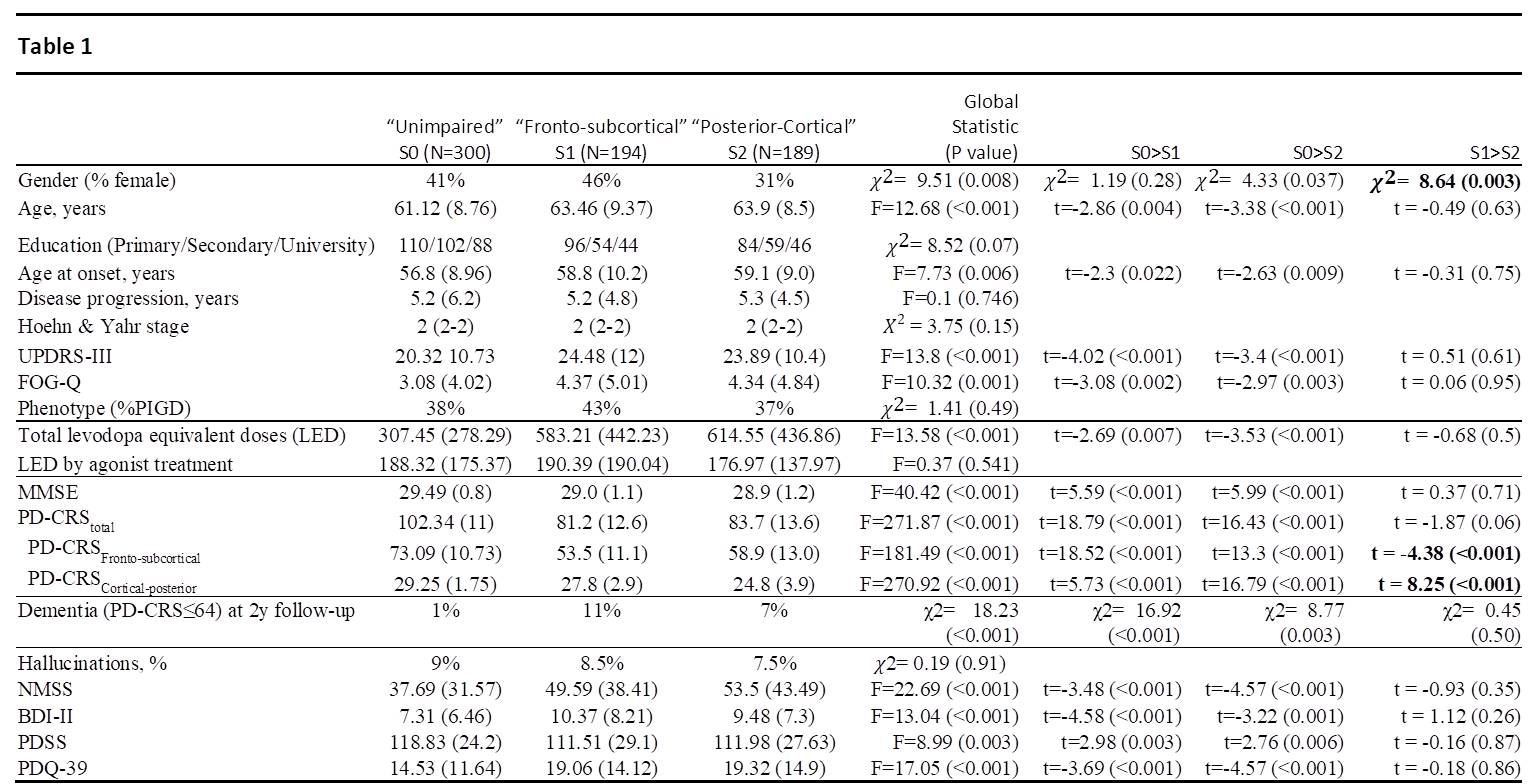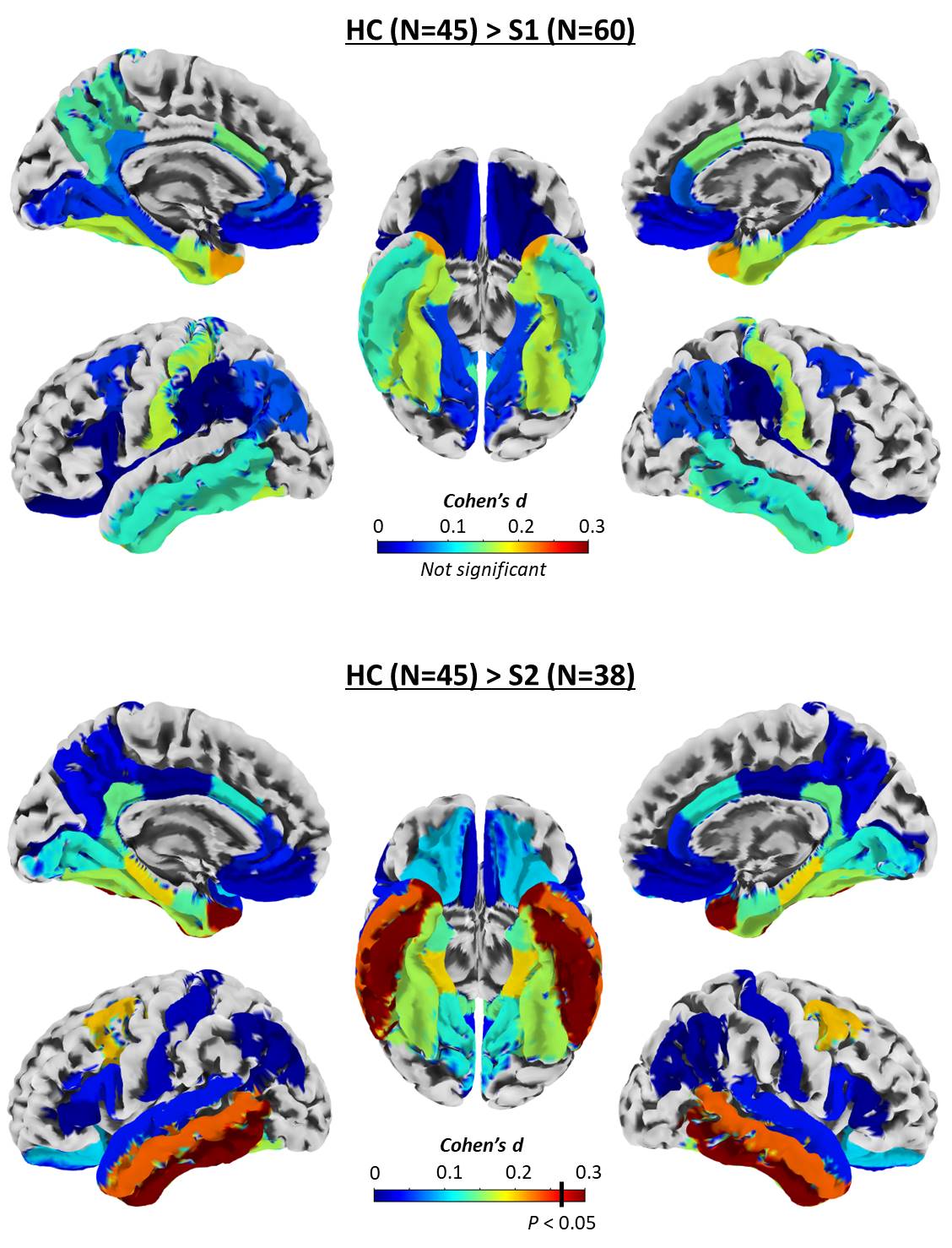Category: Parkinson's Disease: Cognitive functions
Objective: To use a novel data-driven approach, Subtype and Stage inference (SuStain)[1], for identifying distinct subtypes of domain-specific cognitive decline in Parkinson’s disease (PD), and study their respective risks for developing dementia.
Background: Individual trajectories of cognitive decline in PD are highly heterogeneous, but previous clustering approaches for subtyping cognition in PD showed limited success in disentangling variance related to overall severity versus domain-specific subtype of cognitive decline [2].
Method: We included 683 nondemented PD patients and 204 healthy controls from the multicentric COPPADIS study, who had standardized neurocognitive assessment with the PD-Cognitive Rating Scale (PD-CRS). Individual PD-CRS item scores were converted to age- and education-adjusted w-scores with reference to the healthy controls and then modeled with SuStain, which combines clustering with event-based modeling to disentangle cognitive subtypes together with their estimated stages of cognitive progression. Identified subtypes were characterized in terms of clinical features, regional brain atrophy on MRI (in a subset), and risk of developing dementia over 2y follow-up.
Results: SuStain found cross-validated evidence for the existence of two distinct subtypes of cognitive decline among PD patients (S1, N=194; S2, N=189), together with a third group of unimpaired patients (S0, N=300). S1 showed initial impairment in attention and working memory, followed by clock drawing and verbal fluency, whereas S2 initially showed selective impairment in clock drawing and copy performance, followed by attention deficits [figure1]. Subtypes did not differ in global cognition (MMSE), but S1 was overall more impaired in the “fronto-subcortical” PD-CRS summary score, and S2 more impaired in the “cortical-posterior” score [table1]. S1 had a higher proportion of females, but subtypes did not differ in any other clinical features. Exploratory MRI analysis showed slightly more pronounced temporal cortical atrophy in S2 [figure2], but both subtypes had similar risk of developing dementia (S0: 1%, S1: 11%, S2: 7%).
Conclusion: This large-scale data-driven analysis confirms the existence of distinct “fronto-subcortical” and “cortical-posterior” cognitive subtypes in PD, which showed similar short-term risks of developing dementia.
References: [1] Young et al. Uncovering the heterogeneity and temporal complexity of neurodegenerative diseases with Subtype and Stage Inference. Nat Commun. 2018 Oct 15;9(1):4273.
[2] Dujardin et al. The spectrum of cognitive disorders in Parkinson’s disease: a data-driven approach. Mov Disord. 2013 Feb;28(2):183-9.
To cite this abstract in AMA style:
M. Grothe, M. Labrador-Espinosa, S. Jesús, F. Roldán Lora, M. Aguilar Barberá, P. Pastor, S. Escalante Arroyo, B. Solano Vila, A. Cots Foraster, J. Ruiz Martínez, F. Carrillo Padilla, M. Pueyo Morlans, I. González Aramburu, J. Infante Ceberio, J. Hernández Vara, O. de Fábregues-Boixar, T. Deus Fonticoba, B. Pascual-Sedano, SG. Coppadis, P. Martínez-Martín, J. Kulisevsky, D. Santos-García, P. Mir. Data-driven identification of distinct fronto-subcortical and cortical-posterior subtypes of cognitive decline in Parkinson’s disease [abstract]. Mov Disord. 2022; 37 (suppl 2). https://www.mdsabstracts.org/abstract/data-driven-identification-of-distinct-fronto-subcortical-and-cortical-posterior-subtypes-of-cognitive-decline-in-parkinsons-disease/. Accessed November 6, 2025.« Back to 2022 International Congress
MDS Abstracts - https://www.mdsabstracts.org/abstract/data-driven-identification-of-distinct-fronto-subcortical-and-cortical-posterior-subtypes-of-cognitive-decline-in-parkinsons-disease/



